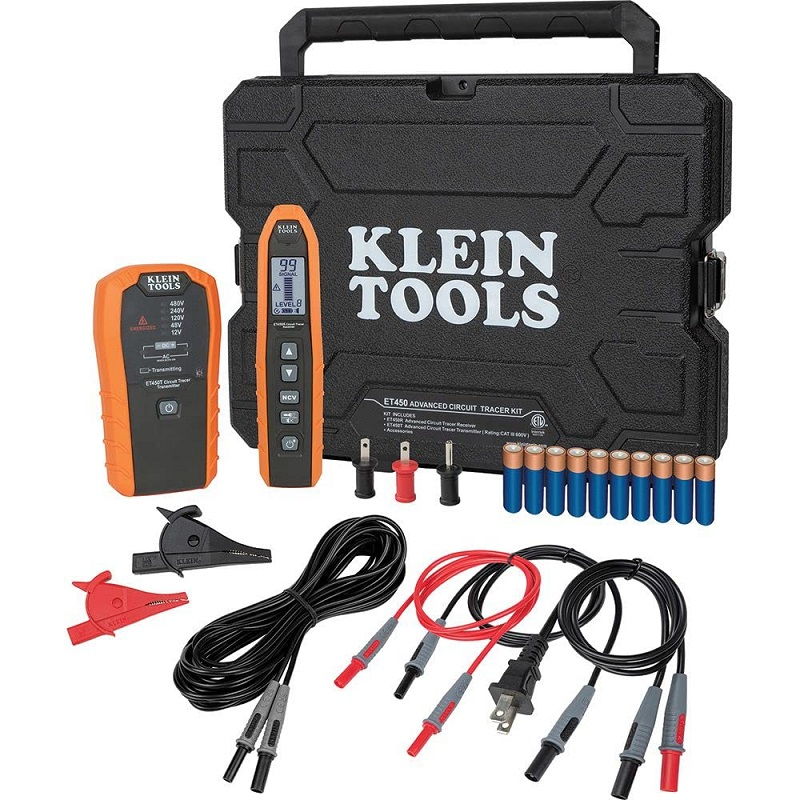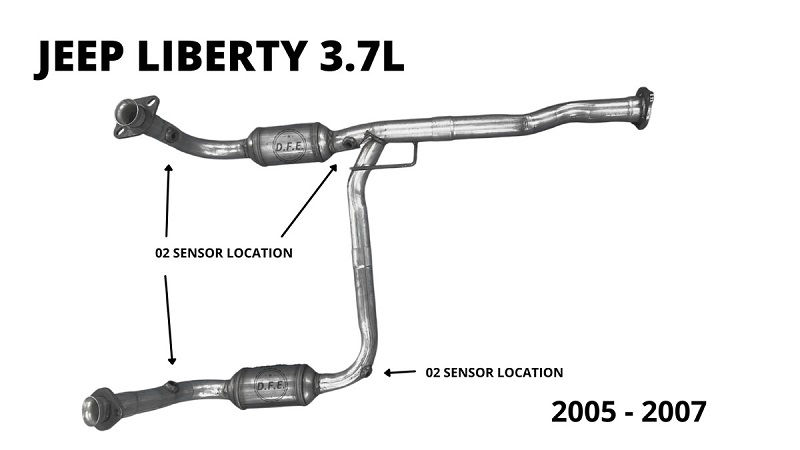This post contains affiliate links. This means I will make a commission at no extra cost to you should you click through and make a purchase [ “As an Amazon Associate, I earn from qualifying purchases.” ]. Read the full disclosure here.
Jeep Liberty Catalytic Converter GuideMechanic.Com Are you a proud owner of a Jeep Liberty? If so, you may have heard about the importance of the catalytic converter for your vehicle’s performance and emissions control.
In this comprehensive blog article, we will take a deep dive into the world of Jeep Liberty catalytic converters.
From understanding their function and importance to discussing common issues and maintenance tips, we have got you covered. So, let’s explore the ins and outs of Jeep Liberty catalytic converters together.
Before we delve into the specifics, let’s start with the basics. The catalytic converter is an essential component of your Jeep Liberty’s exhaust system.
Its primary function is to reduce harmful emissions from your vehicle by converting toxic pollutants into less harmful substances.
See Also: Jeep Dashboard Symbols and Meanings
By doing so, it plays a crucial role in reducing air pollution and ensuring compliance with environmental regulations.
Signs of a Failing Catalytic Converter
Check out this Jeep Wave Pullover Hoodie

While catalytic converters are designed to be durable, they can deteriorate over time due to various factors. It’s crucial to be aware of the warning signs that indicate a failing catalytic converter. Here are some common symptoms to watch out for:
- Check Engine Light: If the catalytic converter is experiencing issues, it may trigger the check engine light on your Jeep Liberty’s dashboard. This is often accompanied by the storing of diagnostic trouble codes (DTCs) related to the catalytic converter.
- Decreased Engine Performance: A failing catalytic converter can lead to decreased engine performance and power output. You may notice a lack of acceleration, reduced fuel efficiency, or difficulty maintaining higher speeds.
- Unusual Smells: A failing catalytic converter can produce unusual smells in the exhaust gases. You may detect a rotten egg or sulfur-like odor emanating from the tailpipe. This is often an indication of a malfunctioning converter unable to adequately convert the sulfur compounds in the exhaust gases.
- Loud Exhaust Noise: A failing catalytic converter can also contribute to loud exhaust noises or rattling sounds. This may be a result of internal damage or a loose catalyst substrate within the converter.
- Emission Test Failures: If your Jeep Liberty fails an emission test or does not meet the required emission standards, it could be due to a malfunctioning catalytic converter. High levels of pollutants in the exhaust gases are an indication that the converter is not functioning properly.
Common Issues with Jeep Liberty Catalytic Converters
Jeep Liberty owners may encounter specific problems related to their catalytic converters. It’s essential to address these issues promptly to ensure optimal performance and compliance with emission regulations. Here are some common problems that can arise:
1. Converter Overheating
One of the common issues with catalytic converters is overheating. High operating temperatures can cause the catalyst inside the converter to deteriorate, leading to reduced efficiency and performance.
Overheating can be caused by a variety of factors, including engine misfires, rich fuel mixture, or exhaust system restrictions.
If you notice signs of overheating, such as discoloration or warping of the converter housing, it’s crucial to identify and resolve the underlying cause to prevent further damage.
2. Catalyst Substrate Damage
The catalyst substrate, which contains the precious metals responsible for the catalytic reactions, can become damaged due to various factors.
Physical impact, such as hitting a speed bump or road debris, can cause the substrate to crack or break, reducing its effectiveness.
Additionally, exposure to contaminants, such as leaded gasoline or silicone-based products, can lead to catalyst poisoning and degradation.
Regular inspections and avoiding potential sources of damage are key to maintaining the integrity of the catalyst substrate.
3. Clogging or Blockage
Catalytic converters can become clogged or blocked over time, restricting the flow of exhaust gases. This can occur due to the accumulation of debris, such as carbon deposits or unburned fuel, on the catalyst surface.
Clogging can lead to increased backpressure in the exhaust system, negatively impacting engine performance and fuel efficiency.
Regular maintenance, including proper fuel and oil quality, can help prevent clogging and ensure optimal converter function.
4. External Damage
Jeep Liberty catalytic converters are susceptible to external damage due to their location in the undercarriage of the vehicle.
See Also: Jeep Compass Warning Lights
Factors such as road debris, rocks, or driving over rough terrain can lead to physical damage to the converter, including dents or punctures.
External damage can compromise the converter’s integrity and effectiveness, necessitating repairs or replacement.
5. Oxygen Sensor Malfunction
The oxygen sensors play a crucial role in the proper functioning of the catalytic converter. They monitor the oxygen levels in the exhaust gases and provide feedback to the engine control unit (ECU) for optimal fuel-air mixture control.
If the oxygen sensors malfunction or provide inaccurate readings, it can affect the converter’s performance and efficiency.
Regular sensor inspections and replacements, if necessary, are essential for maintaining a healthy catalytic converter.
How to Maintain Your Jeep Liberty Catalytic Converter
Check out this Klein Tools ET450 Advanced Circuit Breaker Finder and Wire Tracer Kit for Energized and Non-Energized Breakers, Fuses, and Wires

Proper maintenance can extend the lifespan of your catalytic converter and ensure optimal performance. Here are some practical tips and guidelines:
1. Regular Inspections
Regularly inspect your Jeep Liberty’s catalytic converter for signs of damage, overheating, or clogging. Look for discoloration, warping, or visible cracks on the converter housing. If you notice any issues, address them promptly to prevent further damage and ensure proper function.
2. Avoiding Fuel and Oil Contamination
Using high-quality fuel and oil is crucial for maintaining the health of your catalytic converter. Contaminated or low-quality fuel can introduce harmful substances into the exhaust gases, leading to catalyst poisoning and degradation.
Similarly, using the recommended grade of engine oil and adhering to the manufacturer’s maintenance schedule ensures optimal engine performance and reduces the risk of oil-related issues that can affect the converter.
3. Repair Exhaust System Leaks
Exhaust system leaks, such as cracked or damaged pipes or faulty gaskets, can impact the performance of your catalytic converter.
These leaks can introduce excess oxygen into the exhaust system, disrupting the catalytic reactions and reducing efficiency. It’s important to have any leaks repaired promptly to maintain the proper functioning of the converter.
4. Drive Responsibly
Your driving habits can also influence the lifespan of your catalytic converter. Aggressive driving, excessive idling, and frequent short trips can contribute to increased carbon buildup on the catalyst surface, leading to clogging and reduced converter efficiency.
Opt for smooth driving, avoid rapid acceleration and deceleration, and aim for longer trips when possible to allow the converter to reach and maintain optimal operating temperatures.
5. Follow Maintenance Recommendations
Adhering to your Jeep Liberty’s maintenance recommendations is crucial for the health of your catalytic converter.
Regularly servicing your vehicle, including oil changes, air filter replacements, and spark plug inspections, helps ensure proper engine performance and reduces the risk of issues that can affect the converter. Follow the manufacturer’s guidelines and schedule maintenance visits accordingly.
Can You Replace a Catalytic Converter Yourself?
Many Jeep Liberty owners wonder if they can replace a catalytic converter themselves as a do-it-yourself (DIY) project. While it is possible, it’s important to consider several factors before embarking on the replacement process:
1. Skill and Experience
Replacing a catalytic converter requires a certain level of skill and experience in automotive repair. It involves working with exhaust system components, such as bolts, clamps, and hangers, and may require specialized tools.
If you have prior experience and feel confident in your abilities, you may consider a DIY replacement. Otherwise, it’s advisable to seek professional assistance to ensure the job is done correctly.
2. Access to Equipment and Tools
Replacing a catalytic converter may require specific equipment and tools, such as a jack, jack stands, a socket set, and a torque wrench.
See Also: Jeep Grand Cherokee Alternator
Ensure you have access to the necessary equipment before attempting a DIY replacement. If you don’t have the required tools, it may be more cost-effective to have the replacement done by a professional who already possesses the necessary equipment.
3. Warranty Considerations
If your Jeep Liberty is still under warranty, it’s important to consider the impact of a DIY catalytic converter replacement on your warranty coverage.
Some warranties may require repairs and replacements to be performed by authorized dealerships or certified technicians.
Check your warranty documentation or consult with the manufacturer to understand the warranty implications before proceeding.
4. Compliance with Local Regulations
When replacing a catalytic converter, it’s essential to ensure compliance with local regulations and emission standards.
Different regions may have specific requirements for the type and certification of catalytic converters allowed.
If you decide to replace the converter yourself, ensure that the replacement unit meets the necessary standards and regulations for your area.
5. Cost and Convenience
Consider the cost and convenience factors when deciding whether to replace a catalytic converter yourself or seek professional assistance.
DIY replacements may save on labor costs but can be time-consuming and require additional effort. On the other hand, having a professional replace the converter ensures the job is done efficiently and correctly, saving you time and potential frustration.
The Cost of Replacing a Jeep Liberty Catalytic Converter

Replacing a catalytic converter can be a significant expense, so it’s essential to be aware of the potential costs involved. The cost of a replacement catalytic converter for a Jeep Liberty can vary depending on several factors:
1. Type of Converter
The type of catalytic converter you choose can significantly impact the cost. There are two main types: original equipment manufacturer (OEM) converters and aftermarket converters.
OEM converters are produced by the vehicle manufacturer and tend to be more expensive. Aftermarket converters, on the other hand, are produced by third-party manufacturers and generally offer more affordable options.
2. Certification Level
Catalytic converters come in different certification levels, such as EPA (Environmental Protection Agency) compliant converters or CARB (California Air Resources Board) compliant converters.
See Also: 2007 Jeep Commander Problems
CARB-compliant converters are typically more expensive due to stricter emissions regulations in California. The certification level required for your Jeep Liberty will depend on your location and local regulations.
3. Labor Costs
The labor costs associated with catalytic converter replacement can vary depending on the repair shop or dealership you choose.
Labor costs can include the time required for diagnosis, removal of the old converter, installation of the new converter, and any additional repairs or adjustments necessary. It’s advisable to obtain quotes from multiple sources to compare prices and ensure you are getting a fair deal.
4. Additional Parts or Repairs
In some cases, the replacement of a catalytic converter may require additional parts or repairs. For example, if there is damage to the exhaust system or oxygen sensors, these components may need to be replaced as well. The cost of these additional parts and repairs should be factored into the overall cost of the replacement.
5. Warranty Coverage
If your Jeep Liberty is still under warranty, the cost of catalytic converter replacement may be covered, either fully or partially, depending on the terms of the warranty.
Check your warranty documentation or consult with the manufacturer to understand the extent of warranty coverage for catalytic converter replacement.
Legal Requirements and Regulations
Understanding the legal requirements and regulations surrounding catalytic converters is crucial for every Jeep Liberty owner.
Compliance with these regulations ensures not only the legality of your vehicle but also the reduction of harmful emissions. Here are some key aspects to consider:
Emission Standards
Each country and region has its own emission standards that vehicles must meet. These standards dictate the maximum permissible levels of pollutants emitted by vehicles, including nitrogen oxides (NOx), carbon monoxide (CO), and hydrocarbons (HC).
Jeep Liberty catalytic converters are designed and certified to meet these emission standards. It’s important to ensure that any replacement catalytic converter you choose is also compliant with the applicable emission standards in your area.
Mandatory Inspections
In many regions, vehicles are subject to periodic emissions inspections to ensure compliance with emission standards. These inspections may include testing the functionality and efficiency of the catalytic converter.
Failing an emissions inspection due to a malfunctioning or non-compliant catalytic converter can result in penalties, fines, or a requirement to repair or replace the converter.
Illegal Modifications
Modifying or removing a catalytic converter to increase the performance of your Jeep Liberty is illegal in most jurisdictions. Such modifications can lead to increased emissions and environmental pollution.
Additionally, tampering with the emission control system, including the catalytic converter, can result in legal consequences, including fines and vehicle impoundment.
CARB Compliance
The California Air Resources Board (CARB) has stricter emission standards than many other states in the United States.
If you reside in California or plan to drive your Jeep Liberty there, it’s important to ensure that any replacement catalytic converter is CARB-compliant. Non-compliant converters may lead to legal issues and the inability to register or sell your vehicle in California.
See Also: Jeep Wrangler Catalytic Converter
- Seafoam Catalytic Converter Cleaner: It Work & How to Use It? - April 18, 2025
- Rislone Catalytic Converter Cleaner: What It Is, How It Works - April 18, 2025
- Wynn’s Catalytic Converter Cleaner 325ml - April 17, 2025

